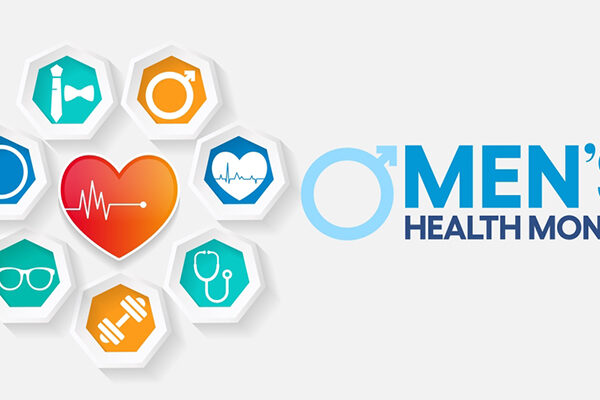Updated on September 12, 2023
What is Saddle Pulmonary Embolism and Paradoxical Embolism?
Asthma is a common respiratory condition, which causes the narrowing of airways that leads to breathing difficulties. There are numerous triggering factors for asthma — saddle pulmonary embolism, and paradoxical embolism being a few of them. Asthma affects everyone regardless of gender or age. It is considered one of the most common health risks for children and adults as it can present other serious medical issues if not treated timely. Saddle pulmonary embolism and paradoxical embolism both occur because of the dislodgement of a clot and can cause severe respiratory issues.
Also read: Asthma Exacerbation Treatment & Management
Continue reading this blog to understand the basics of saddle pulmonary embolism and paradoxical embolism, and how it triggers asthma.
What is Pulmonary Embolism?
Pulmonary embolism refers to a blood clot that blocks the blood flow to the arteries and blood vessels of the lungs. In most cases, the starting point for the emboli is a deep vein in the leg that travels all the way to the lungs and causes issues. Pulmonary embolism can be life-threatening and needs to be catered to immediately.
Breaking Down Saddle Pulmonary Embolism
A saddle pulmonary embolism refers to a type of embolism that happens when the blood clot lodges at the junction of the right and left branches of the main pulmonary arteries within the lungs. The blood clot is usually larger and unstable. This type of pulmonary embolism usually originates in the deep veins of the legs (deep vein thrombosis, or DVT). This results in a saddle-shaped occlusion in both pulmonary arteries, hence the name “saddle pulmonary embolism”.
Symptoms of Saddle Pulmonary Embolism
- Chest pain
- Shortness of breath
- Spitting blood from coughing
- Difficulty breathing
- Fast heart rate
- Lightheadedness
Anyone experiencing these symptoms should immediately seek help as it is a medical emergency that requires prompt action.
Relationship between Asthma and Saddle Pulmonary Embolism
When considering the connection between asthma and saddle pulmonary embolism, it’s essential to recognize that they are distinct medical conditions, but there could be instances where they influence and exacerbate each other.
Reduced Oxygenation:
A decrease in oxygenation exchange in the lungs may result from a saddle pulmonary embolism. People who already have underlying asthma may have a triggering or exacerbation of their symptoms due to this decreased blood oxygenation. Asthma involves inflammation and narrowing of the airways, and reduced oxygen levels can further aggravate these symptoms by increasing irritation and inflammation of the airways.
Extra Stress on the Respiratory System:
The strain that saddle pulmonary embolism places on the heart also impacts the respiratory system. The heart has to put in extra efforts to pump blood through blocked pulmonary arteries leading to increased heart rate and oxygen demand. This added stress on the heart impacts breathing patterns.
Interactions with Medications:
The interplay between medications for asthma and those for saddle pulmonary embolism can significantly affect the patient. Adjustment of dosage is important to keep balance.
What is Paradoxical Embolism?
Paradoxical embolism is an uncommon occurrence that happens when a blood clot that usually starts in the venous circulation—the deep veins of the legs, for example—manages to avoid going via the lungs and instead enters the arterial circulation, where it frequently ends up in the systemic circulation. If there’s an incorrect connection between the right (venous) and left (arterial) sides of the heart, a clot can travel from the venous side to the arterial side, and then be circulated to other arteries in the body. The most common site for paradoxical embolism to occur is the patent foramen ovale (PFO) which is an opening between the two upper chambers of the heart. Other lifestyle factors can also be the cause of paradoxical embolism, like obesity, smoking, and a sedentary lifestyle.
How Dangerous can Paradoxical Embolism be?
Paradoxical embolism can block blood flow and lead to deficiency of oxygen which can cause tissue and cell death. Moreover, it can also cause:
- Heart attack
- Stroke
- Blindness
- Kidney damage
Is there a Link between Paradoxical Embolism and Asthma?
Just like the connection between saddle pulmonary embolism and asthma, the same is valid for paradoxical embolisms and asthma. However, the link between the latter is relatively unclear.
Potential mechanisms by which paradoxical embolism and asthma might have a connection include:
• Systemic Effects:
If a paradoxical embolism occurs and reaches the systemic arteries, it may cause issues like reduced blood supply to tissues and organs leading to stress on the body including the respiratory system. This may potentially trigger asthma and cause exacerbations.
• Inflammatory Response:
The presence of a clot in the arterial circulation might lead to localized inflammation. Asthma is characterized by inflammation and narrowing of airways and any systemic inflammation may exacerbate asthma symptoms.
• Cardiovascular Strain:
A paradoxical embolism may cause additional strain on the heart, as discussed for saddle pulmonary embolism. It may alter heart rate, blood pressure, and overall cardiovascular function.
A Word from Revival
Revival Research Institute is committed to advancing medicine and transforming lives. We have conducted multiple pulmonology clinical trials for asthma. Our Asthma Clinical Trials in Michigan are focused on helping patients potentially manage their asthma symptoms through novel therapeutic options and making informed decisions regarding their health.
Outlook
In summary, paradoxical embolism and saddle pulmonary embolism are conditions involving the movement of blood clots, each with potential consequences for asthma sufferers.
Paradoxical embolism, although rare, could indirectly affect asthma through systemic effects, inflammation, and cardiovascular strain. Saddle pulmonary embolism, by compromising oxygenation and stressing the respiratory system, may worsen asthma symptoms.
Understanding the interplay between them is critical for timely intervention and management, ensuring that individuals with both embolisms and asthma receive holistic care. Effective collaboration among medical professionals is key to addressing the complexities of these conditions and their impact on patients’ well-being.





